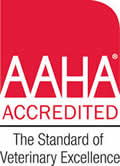THE EASTERN BLUEBIRD
Sialia sialis
(Wendy/Wayne's Love Affair with the BlueBird)

Male Blue
Wendy & I enjoy our birds. We are not official ‘birders’ – but we sure do love to watch them from our windows. And we enjoy attending to their care. Year round, for our birds, we provide both food and water – the water source heated in winter months.
The bluebird where we live (New Jersey) is the eastern bluebird – as opposed to the western bluebird or the mountain bluebird, which live (and bred & winter) in more western parts of the country.
All bluebirds were in great decline in America in the mid 1900s. But it was the eastern bluebird who suffered most – its population estimated to have sunk by as much as 90% then. I never saw a bluebird as a child. It is felt that most of the decline occurred because the holes in trees which served as bluebird nesting cavities were destroyed inadvertently by human activity. Also, the more aggressive starlings and house sparrows, introduced from Europe, did not help the situation any.

Spring & Fall box cleaning time
Thankfully, in 1978, the North American Bluebird Society was formed. This ignited the bluebird movement. It started with the eastern bluebird, but then spread to the other 2 species as well. New interest, knowledge, & conservation efforts served, over the decades, to greatly increase the numbers of these beautiful birds.
The bluebird is a most beautiful bird. Henry David Thoreau said “The bluebird carries the sky on its back”.
Some 20-25 years ago, I decided to begin a ‘bluebird trail’, and today I manage multiple boxes on a couple of properties. Ours is more of a bluebird community than a trail. Regardless, we care for a bunch of blues each year.
Our annual fledglings are numerous. A couple of years ago we set our own record with 7 boxes active at one time – active meaning a box with eggs or babies.
 Our preferred (and desirable) box occupants are eastern bluebirds and tree swallows. Occasionally we get a nest of titmice or chickadees. These all are welcome. But mostly we get bluebirds and tree swallows at about a 70/30 ratio of blues to trees. We discourage house wrens and house sparrows as these two are bluebird aggressive – stealing nest space, throwing eggs out, & killing babies.
Our preferred (and desirable) box occupants are eastern bluebirds and tree swallows. Occasionally we get a nest of titmice or chickadees. These all are welcome. But mostly we get bluebirds and tree swallows at about a 70/30 ratio of blues to trees. We discourage house wrens and house sparrows as these two are bluebird aggressive – stealing nest space, throwing eggs out, & killing babies.
I try to visit the boxes daily. I talk to the birds. I prefer (and only use) those boxes which open from the side. (These boxes are harder to fine). Sometimes I pet/stroke Momma Blue or Mamma Tree once or twice on her back with my forefinger when she is sitting on eggs or young.
There are a number of books to read about these guys, but one I like is The Bluebird Book by Donald & Lillian Stokes.
Note: Bluebird boxes must be (ought to be) constructed according to specifications. Again – I prefer boxes which open on the side – and these are harder to find.

Blues love a good bath


One of our boxes

Another of our boxes

Male Bluebird feeding young

Tree Swallow feeding young
INSTALLATION OF BLUEBIRD BOXES
by R. Wayne Randolph
Flemington, New Jersey
Goals of proper installation
- must face your home or office (so you can see birds)
- do not face north
- beware predators climbing up to box
Our preferred method of installation
- this method has worked well for us over many years
- obtain/purchase an 8 foot long metal post called a metal “U post” (we buy ours at Agway in Clinton or at Finkles in Lambertville) – not metal “T bars” (too heavy)
- dig hole & bury post 18-24 inches – hence about 6 feet of post is above ground
- flat face of metal post faces the house
- Attach box to pole using the two metal clamps we put inside the box. Position top of the wooden 2 x 4 (already screwed onto back of box) to match/equal the top of metal pole.
Alternate methods of installation
- other poles – metal or wood
- fence posts
- do not nail boxes onto trees (bugs & critters)
Desirable birds for your boxes
- bluebirds = likely ▪ nests = dry grass (mostly) & occasional pine needles
- tree swallows = likely ▪ nests = pine needles (mostly), grass, & lined with
feathers - chickadees = unlikely ▪ nests = moss (mostly), plant down, & animal hair
Undesirable birds
- house wrens – identify nest & remove ▪ nests = tall nest of small twigs
- house sparrows – identify nest & remove
Check your boxes
- books say to check once weekly
- best is to check daily
Any questions?
We have been doing this for 25 years, and we have fledged 100s of bluebirds and tree swallows. Feel free to call us to ask any questions and/or to arrange to come and see how we install & manage the boxes on our ‘bluebird

